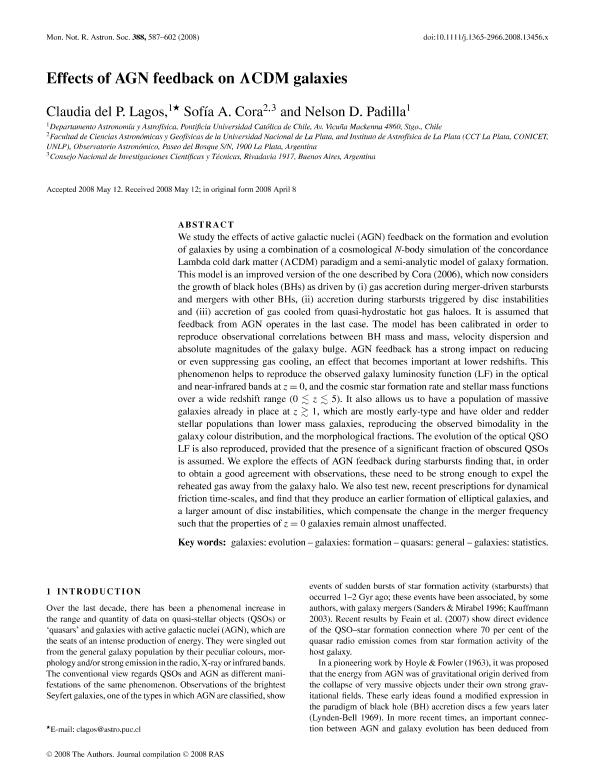Artículo
Effects of AGN feedback on LCDM galaxies
Fecha de publicación:
12/2008
Editorial:
Wiley Blackwell Publishing, Inc
Revista:
Monthly Notices of the Royal Astronomical Society
ISSN:
0035-8711
Idioma:
Inglés
Tipo de recurso:
Artículo publicado
Clasificación temática:
Resumen
We study the effects of Active Galactic Nuclei (AGN) feedback on the formation and evolution of galaxies in a semi-analytic model of galaxy formation. This model is an improved version of the one described by Cora (2006), which now considers the growth of black holes (BHs) as driven by (i) gas accretion during merger-driven starbursts and mergers with other BHs, (ii) accretion during starbursts triggered by disc instabilities, and (iii) accretion of gas cooled from quasi-hydrostatic hot gas haloes. It is assumed that feedback from AGN operates in the later case. The model has been calibrated in order to reproduce observational correlations between BH mass and mass, velocity dispersion, and absolute magnitudes of the galaxy bulge. AGN feedback has a strong impact on reducing or even suppressing gas cooling, an effect that becomes important at lower redshifts. This phenomenon helps to reproduce the observed galaxy luminosity function (LF) in the optical and near IR bands at z=0, and the cosmic star formation rate and stellar mass functions over a wide redshift range (0<z<5). It also allows to have a population of massive galaxies already in place at z>1, which are mostly early-type and have older and redder stellar populations than lower mass galaxies, reproducing the observed bimodality in the galaxy colour distribution, and the morphological fractions. The evolution of the optical QSO LF is also reproduced, provided that the presence of a significant fraction of obscured QSOs is assumed. We explore the effects of AGN feedback during starbursts and new recent prescriptions for dynamical friction time-scales. (ABRIDGED)
Archivos asociados
Licencia
Identificadores
Colecciones
Articulos(IALP)
Articulos de INST.DE ASTROFISICA LA PLATA
Articulos de INST.DE ASTROFISICA LA PLATA
Citación
Lagos, Claudia del Pilar; Cora, Sofia Alejandra; Padilla, Nelson D.; Effects of AGN feedback on LCDM galaxies; Wiley Blackwell Publishing, Inc; Monthly Notices of the Royal Astronomical Society; 388; 12-2008; 587-602
Compartir
Altmétricas




